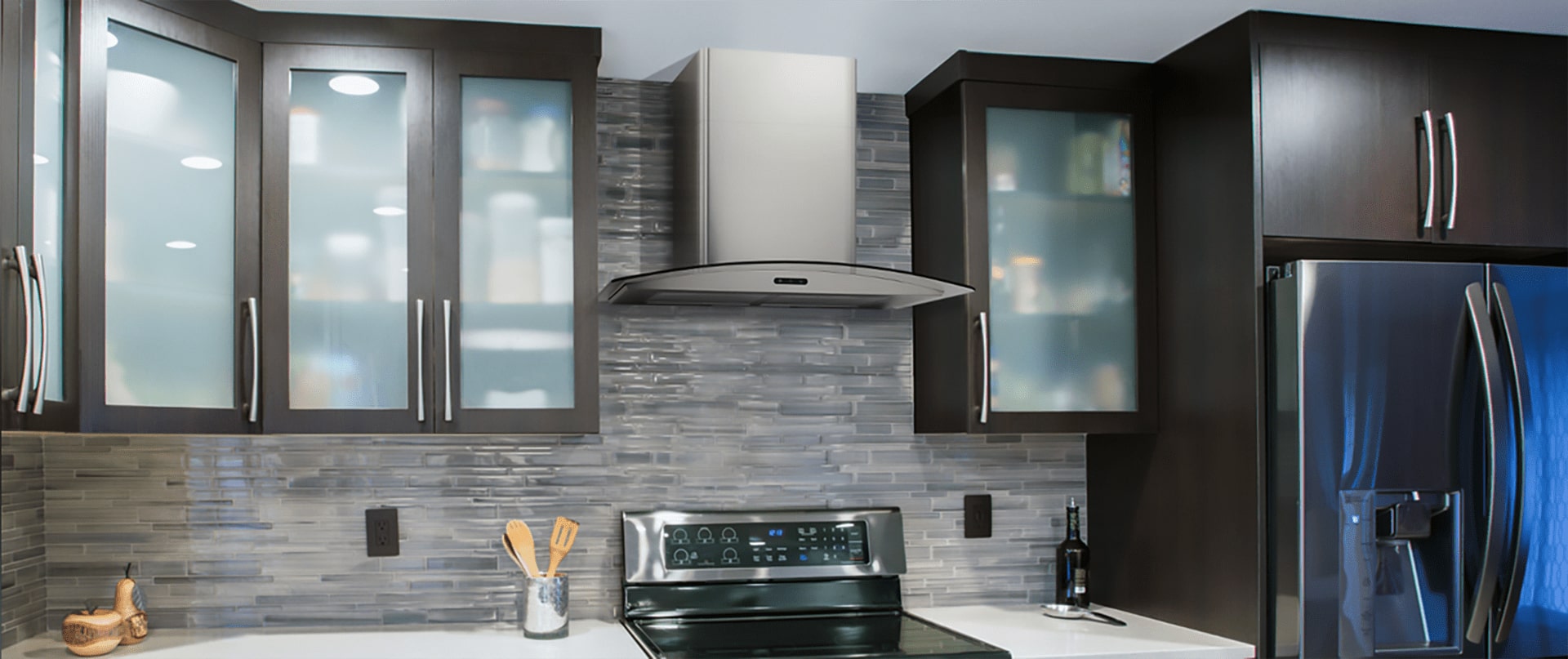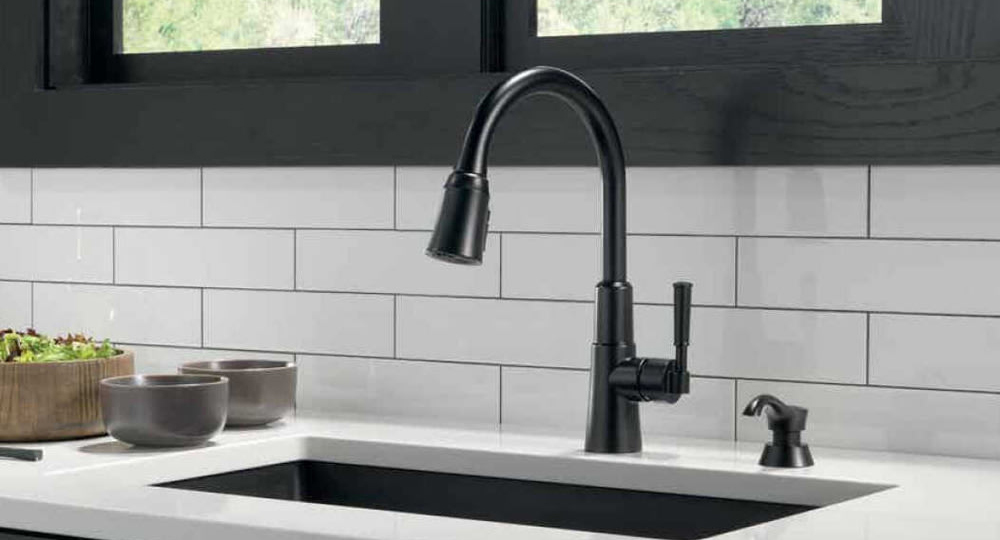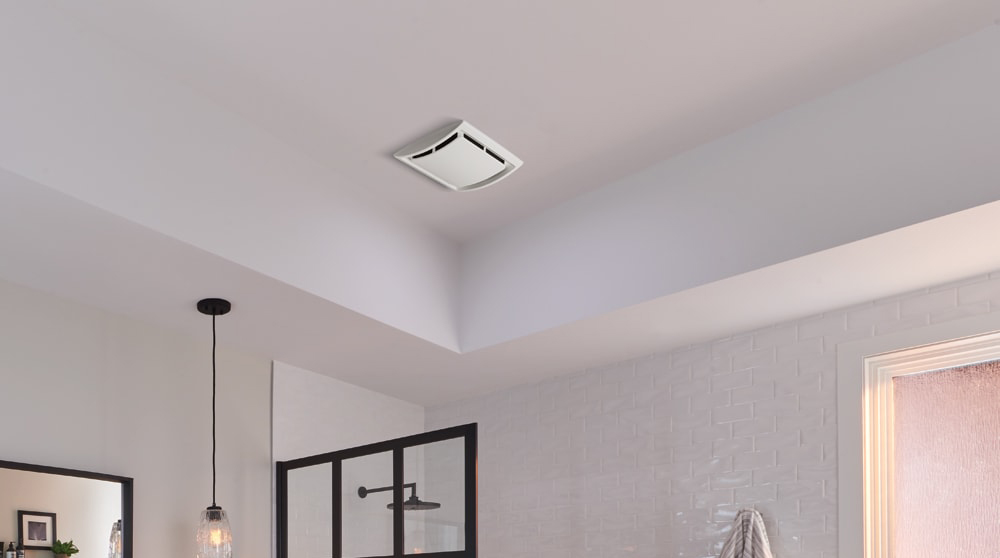Revamping Your Home: A Guide to Kitchen Range Hoods, Faucets, and Bath Vents
Posted by Staff on 24th Aug 2023

Your kitchen sees a lot of action, even if all you do is boil some pasta or sizzle up a few veggies, but every time you use your kitchen range, it releases fumes into the air that pollute your home and reduce its air quality.
Many may argue that it’s something you’ll just have to get used to, but truthfully, there’s a way you can simultaneously improve your cooking experience and make your home a safer place. Installing a range hood is an excellent upgrade for any homeowner who fancies themselves a gourmand (or even those who gasp for air whenever they cook breakfast).
Here’s everything to know about purchasing and installing a kitchen range hood.
What is the Purpose of a Kitchen Range Hood?
You may have seen range hoods hanging above stoves in restaurants, but what is a range hood, exactly? Its purpose is simple: you install it above your stove or range to help extract smoke or pollutants from the air.
Frying or sautéing at high temperatures can release smoke and fumes into the air, increasing the risk of grease fires, while boiling or steaming sends moisture into the air, increasing the risk of mold production. Kitchen range hoods, thankfully, alleviate all of these problems.
Depending on the sorts of things you like to cook and how often you do so, installing a new range hood could act as a significant upgrade for your kitchen. Without a doubt, owning one will instantly turn your kitchen into a much safer place for you to cook whatever you’re in the mood for.
Range Hood Material and Styles
The next step in understanding your search for the right range hood is knowing which materials are the most cost and function-effective. Home Outlet offers range hoods in a variety of steel finishes. Here’s why they’re the ideal choice for virtually any kitchen:
Steel Range Hoods
A steel range hood will be the top pick for most homeowners since it is the perfect material for the job. Its biggest advantage is its high resistance to rust and water damage. Given that a range hood’s primary function is to handle steam and other substances, that quality puts steel far and above many other options.
Steel is also low-maintenance, outside of easily cleaning up splatters like you normally would on your stovetop, and it is also non-porous, which means it’ll resist bacteria better than other materials can.
Painted Steel Range Hoods
Painted steel is essentially the same as buying a steel hood, but it provides the added flexibility of getting it to match your kitchen’s aesthetic. You can buy painted steel backsplashes if you want something to add a touch of color while retaining the classic steel look.
Stainless Steel Range Hoods
Add all the benefits of steel and tack on enhanced durability and a glorious sheen, and the result is a stainless steel range hood, which is the perfect fit for kitchens with modern or industrial looks.
Range Hood Parts

Range hoods have multiple components you’ll want to know about as well. Here’s what you should look into to ensure yours works optimally:
Damper
The hood’s damper tucks up into your ductwork. It prevents backdrafts and large debris from entering your ducts through the range hood.
Power Cord
Separate power cords are optional items that give you an alternative to a direct-wire installation. Buying these can be beneficial if needed, but keep in mind that only some range hoods are compatible with power supply kits.
Filters
Filters are vital to remove grease, smoke, and debris from the air. Therefore, it would be best to have replacement filters on hand to ensure those particles don’t build up on your existing filter and create a fire hazard.
A Safe Bet for Your Kitchen Renovation
You’ll be covering all your bases with a kitchen range hood, and now, with some more knowledge, you’re ready to start shopping for the perfect one for your kitchen!
Kitchen Faucets
The kitchen faucet is a workhorse fixture. You use it to blast grease and food off dishes, rinse grit off produce, fill up tea kettles, and so much more. The more versatile a kitchen faucet you have, the better. A quality kitchen faucet like the ones from Home Outlet can level up your prep and clean up in some significant ways.
But what if you aren’t sure which kitchen faucet is right for you? With each type of faucet bringing something unique to the table, it’s good to have a baseline knowledge of kitchen sink faucets. This guide will turn your understanding of sink faucets from a gentle trickle to a full-on blast.
Types of Kitchen Faucets

The various kitchen faucet styles all have something different to offer. You should know about them before committing to a specific type.
Pull-Out Faucets
A pull-out faucet has a separate spray wand with a full handle. These can be mounted off to the side of the sink ledge or be part of the faucet. These faucets are universal to any size sink.
Pull-Down Faucets
Pull-down faucets have a sprayer you can pull off the head rather than a dedicated one off to the side. It gives you an advantage if you need to save space and has a cleaner, sleeker look.
Two-Handle Faucets
Two-handle faucets have separate handles for your hot and cold water. They’re very stylish but also give you superior temperature control. And since the water isn’t all on one line, you can often still use at least one side if one of the lines has issues.
One-Handle Faucets
The one-handle faucet is simple and streamlined. It only requires one pre-drilled hole, allowing you to add more features. Turning these on with your wrists or elbows is much easier, helping you combat cross-contamination when cooking or cleaning.
Kitchen Faucet Materials
What kind of material your faucet is made of is a separate consideration; here’s what we carry at Home Outlet and some examples of situations where you’d want to use one over the other.
Brass Faucets
Brass faucets are widespread thanks to their durable and corrosion-resistant nature. They’re also fantastic at dealing with high temperatures and offer an excellent balance of function and value. Brass finishes beautifully, so you don’t necessarily have to go with the more antique look brass is known for.
Stainless Steel Faucets
Stainless steel is also known for being highly durable, even more so than brass, lasting almost a century if maintained well. Stainless steel can be more limited in terms of looks. But fortunately, stainless steel matches virtually every style of kitchen.
How to Choose the Right Kitchen Faucet
The necessary measurements are the most important to remember when choosing a faucet. Check to see how large the installation area is, including the countertop behind your sink and the dimensions of the pre-drilled holes. Knowing these measurements will not only help you pick the right faucet but also give you an idea of how much room you’ll have to work around it.
You’ll also want to know what kind of sink you own. Drop-in, undermount, and farmhouse designs all have pre-drilled holes. How many there are will determine what kind of faucet you can install. Add-ons like sprayers or water filtrations will take up their own holes, so you must have a sink that can accommodate them.
Finish Your Faucet Project With Confidence
An essential part of shopping for kitchen faucets is knowing you’re buying high-quality ones; everything else will come down to personal taste and requirements. With this newfound information about kitchen faucets, you can begin your kitchen renovation knowing precisely what you need.
Exhaust Fans and Switches

Bathroom renovations are exciting — just planning out a new bathroom layout is part of the reason people love to embark on DIY home improvement tasks! Be that as it may, sometimes even the most minor changes to a space can make the most significant impact, and installing a new bathroom fan is an excellent example.
Most homeowners have a bath fan already in at least one bathroom, but not everyone understands the importance of exhaust fans or their switches. A good fan can improve your comfort and keep your bathroom and its components looking beautiful.
Importance of Bathroom Exhaust Fans
The main purpose of a bathroom’s exhaust fan is to remove moisture from the room and improve its ventilation. They also help control humidity and remove odors, and — as a nice bonus — can help make your mornings faster by clearing up vapor on your mirrors, making it easier to see while you get ready.
Additionally, it’s likely that you often use harsh chemicals to clean your bathroom, but these can pose health risks in smaller spaces. With that being said, another reason to love these fans is how efficiently they eliminate or reduce airborne contaminants.
Lastly, given that bathrooms are quite susceptible to water damage and mold growth, exhaust fans are valuable tools, as they can remove any spores from mold growth and keep your bathroom dry, slowing down how quickly any remaining mold can grow and spread.
Types of Exhaust Fans and Switches
All fans have one job, and that is to remove moisture and contaminants from the air. While most will do so successfully, there are different types of fans and switches you may want to consider for your bathroom based on your needs, such as:
Lighted Bath Fans
The “two-for-one special” of a lighted bath fan is enticing for any DIY homeowner. Fortunately, you can make upgrading your existing bathroom exhaust fan to a lighted bath fan a cinch just by purchasing an LED light kit upgrade from Home Outlet. You can install it in mere minutes and have another light source in your bathroom, making it an affordable upgrade that makes a significant change.
Humidity Sensing Switch
If you want to automate your fan usage, there's no better upgrade than a humidity-sensing exhaust fan switch, which will turn your fan on once the humidity in a room passes a certain threshold. Owning one can help you save on your energy bills, as it'll only turn on when it’s needed.
Countdown Timer Switch
If you're the kind of homeowner who forgets to turn the fan off when you leave the bathroom, a countdown timer might work best for you. A 60-minute timer gives you the flexibility to set it and forget it, knowing the fan will turn off on its own.
Bathroom Exhaust Fan Materials and Finishes
Exhaust fan materials come in a few different options. Steel is the most common, given that the material is durable and can thus withstand the relatively harsher environment of a bathroom much better. Steel also comes in a variety of beautiful painted finishes, which gives you greater control over how your bathroom looks.
Plastic is another popular choice for an exhaust fan material, given that it is lightweight and less expensive, making it an appealing option if you're on a budget. There are also hybrid materials that use both metal and plastic for those on the fence about which they would rather install.
Meet Your Bathroom's Biggest Fan
You can easily protect the cleanliness of your bathroom with a new exhaust fan or automated humidity switch. Hopefully, with the information above in mind, you're ready to shop for your next straightforward upgrade for your bathroom renovation!
The articles and other content contained on this website/blog are provided for informational purposes only and should not be relied upon for any purposes. While it is our goal to provide you with up-to-date, relevant and useful information on a wide range of topics, we make no representations or warranties of any kind, whether express or implied, concerning the reliability, suitability, completeness or accuracy of any of the information made available on this site. The articles and information contained on this site are not intended to provide legal, accounting or other professional or business advice and should not be treated as a substitute for the advice of a professional with knowledge of the facts and circumstances of your specific situation. By accessing this site, you agree that you will not seek to hold E.C. Barton & Company or any of its affiliates liable for any losses or unanticipated costs or assert any other claim based on your use of this site or on the reliance on the content contained herein.


